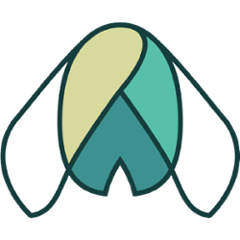Application CRD Client
Features
- Java DSL that provides access to Application CRD resources
- Works on top of the fabric8 kubernetes-client
Usage
Throughout the usage section code samples will be provided. The code samples are going to use the following naming conventions:
acThe Application CRD client instancekcThe Fabric8 Kubernetes client instance
Configuring the client
There are two ways of creating an instance of the service catalog client.
- adapting from an existing instance of
KubernetesClient - manual configuration and instantiation
Adapting
When the Application CRD API is provided by the same API server as the Kubernetes API (both APIs are proxied together), you can easily adapt an existing KubernetesClient instance.
KubernetesClient kc = new DefaultKubernetesClient();
Application ac = kc.adapt(ApplicationClient.class);
This approach is pretty easy, but it can only work if the topology requirements explained above are satisfied. If not, the client needs to be configured manually.
Manual Configuration
To manually instantiate the client, you just need to create a configuration object, that specifies at least the url of the api server and a way to authenticate to it. These may be specified:
- explicitly
- via the
io.fabric8io.kubernetes.client.ConfigDSL
- via the
- implicitly
- using system properties
- using env variables
- using
~/.kube/confg
Using the Config DSL
import io.fabric8.kubernetes.client.Config;
import io.fabric8.kubernetes.client.ConfigBuilder;
...
Config config = new ConfigBuilder().withMasterUrl("https://url.to.api.server")
.withOautToken("sometoken")
.build();
ApplicationClient app = new DefaultApplicationClient(config);
Manipulating Resources
Application
In order to create an Application:
Application app = ac.applications().createNew()
.withNewMetadata()
.withName("wordpress-01")
.addToLabels("app/kubernetes.io/name", "wordpress-01")
.addToLabels("app/kubernetes.io/version", "3")
.endMetadata()
.withNewSpec()
.withNewSelector()
.addToMatchLabels("app.kubernetes.io/name", "wordpress-01")
.endSelector()
.addNewComponentKind("core" ,"Service")
.addNewComponentKind("apps" ,"Deployment")
.addNewComponentKind("apps" ,"StatefulSet")
.withAssemblyPhase("Pending")
.withNewDescriptor()
.withVersion("4.9.4")
.withDescription("WordPress is open source software you can use to create a beautiful website, blog, or app.")
.addNewIcon()
.withSrc("https://example.com/wordpress.png")
.withType("image/png")
.endIcon()
.addNewMaintainer()
.withName("Kenneth Owens")
.withEmail("kow3ns@github.com")
.endMaintainer()
.addNewLink("About", "https://wordpress.org/")
.endDescriptor()
.endSpec()
.done();
